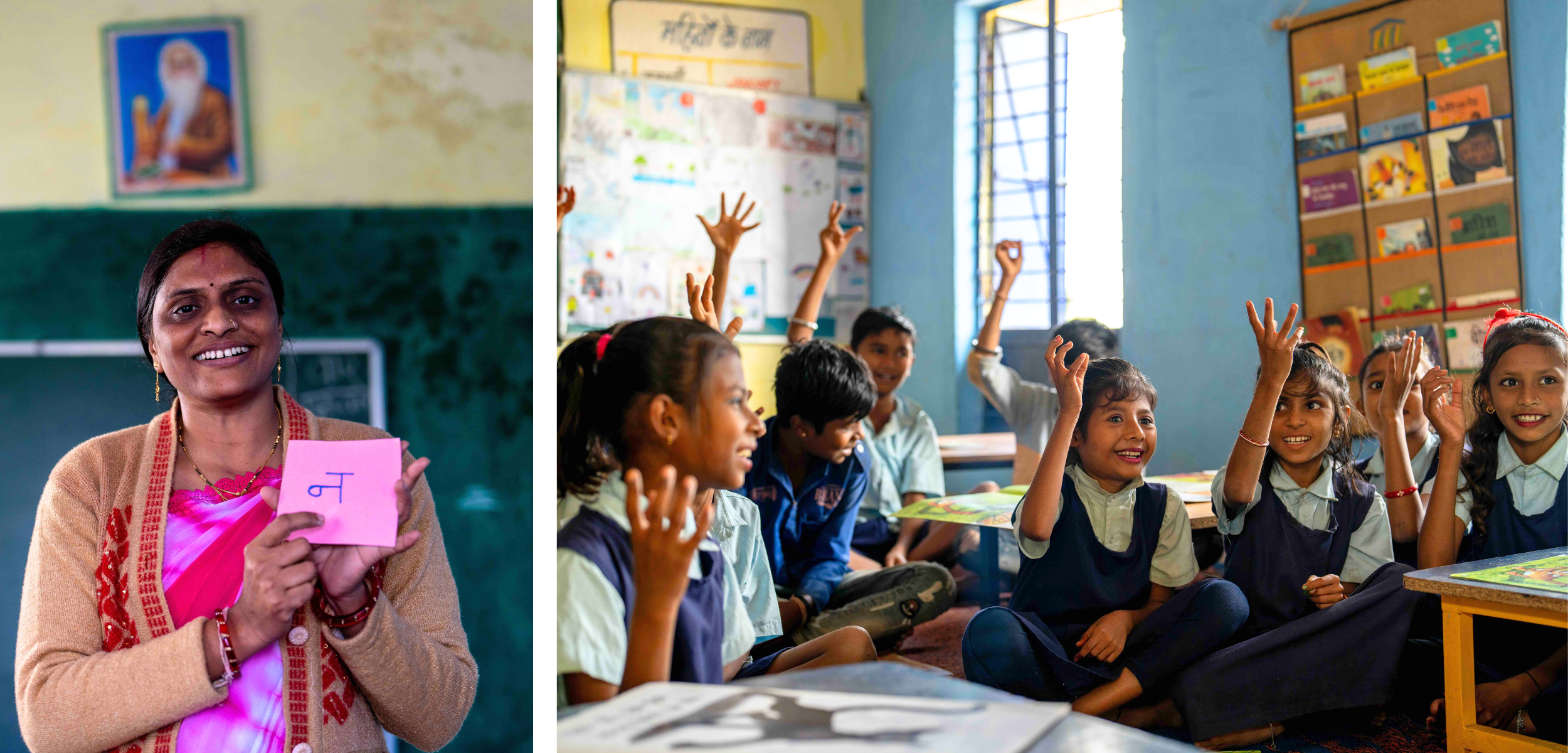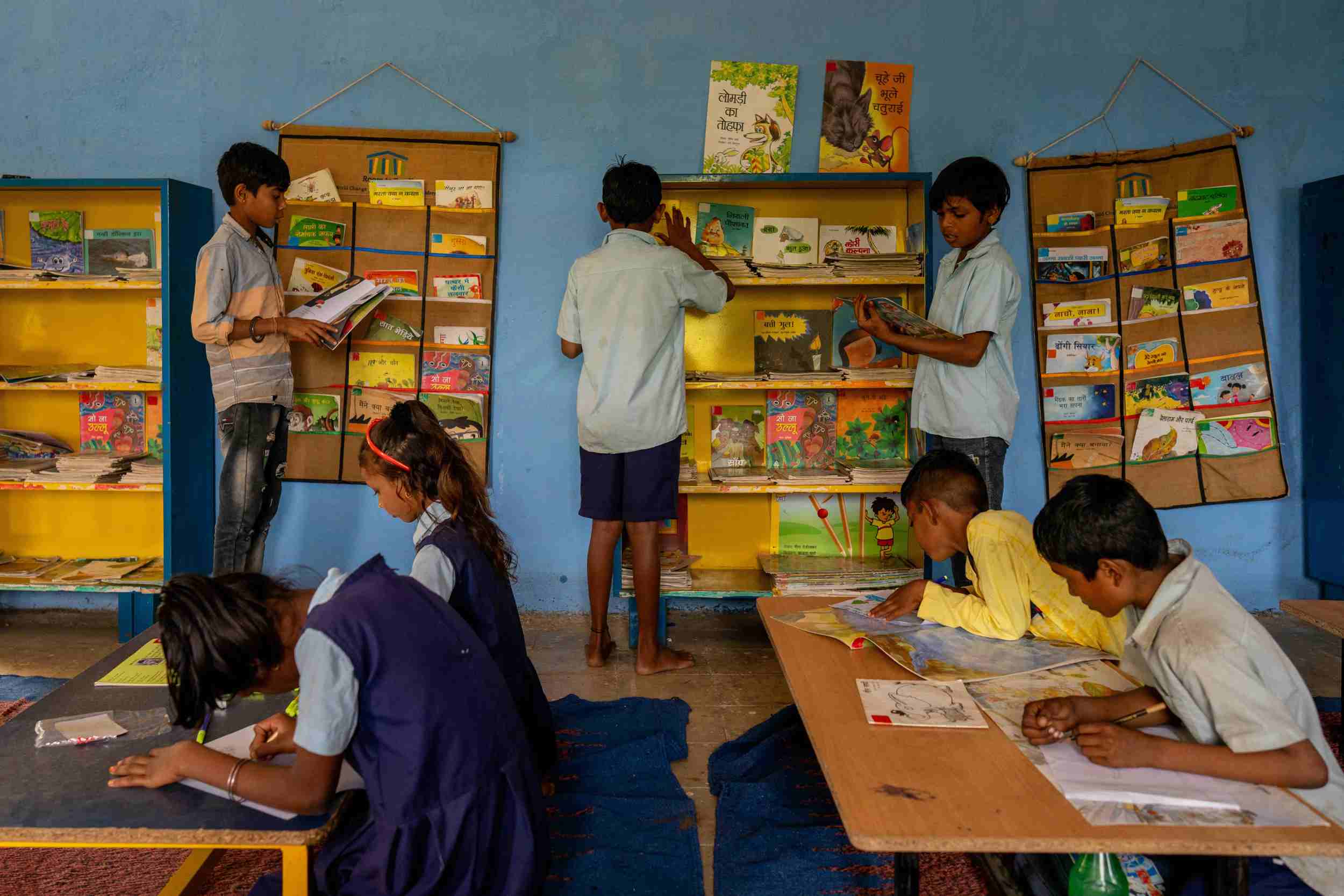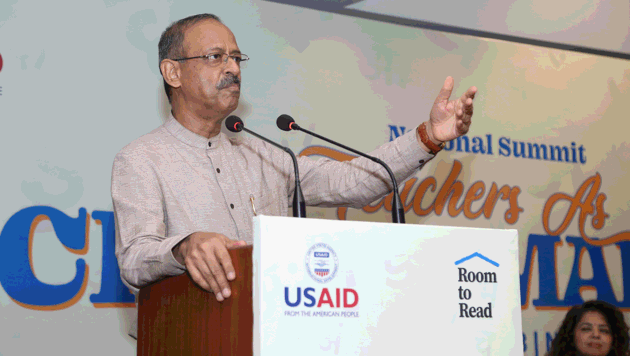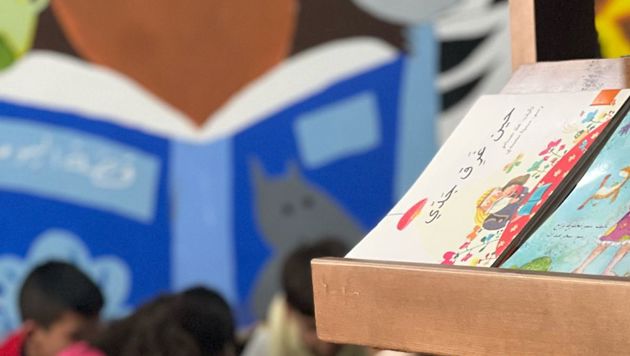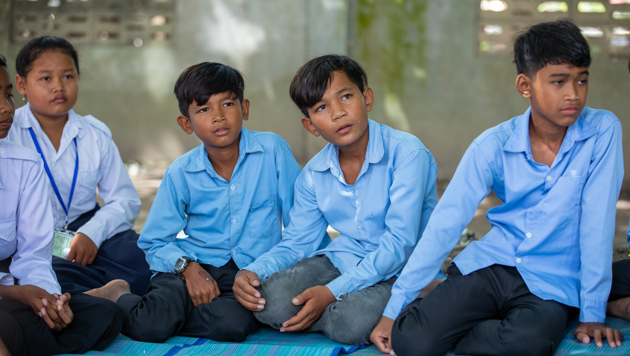Addressing linguistic complexity in Indian classrooms
May 09, 2025

By Stuti Jain
Manager of Instructional Design and Structural Support
Room to Read Literacy Portfolio
The critical role of language in education is well-recognized globally, especially in multilingual contexts where diverse linguistic needs must be addressed to ensure equitable learning outcomes. Language is the medium through which knowledge is transmitted, allowing individuals to interpret and make sense of the world. As Wolff (2007) aptly observes, "Language is not everything in education, but without language, everything is nothing in education.1" This insight becomes particularly relevant in the Indian context, where linguistic diversity creates both opportunities and challenges in educational settings.
Multilingualism is inherent in Indian society, with many individuals proficient in multiple languages, often using different scripts and dialects. This diversity reflects the broader sociolinguistic landscape of the country, and it is manifested in Indian classrooms. Here, teachers and students often engage in a dynamic process of negotiating meaning across different languages. As a result, classrooms become sites where multiple languages intersect, interact and influence the process of learning.
However, this multilingualism also presents challenges, particularly when the language of instruction is different from the learners' home language. At one end of the linguistic continuum, some children may have home languages that closely resemble the instructional language, albeit with variations in oral and written forms. At the other end of the continuum, there are classrooms where children come from entirely different language families, requiring more complex strategies for language instruction.To address these challenges, tailored pedagogical approaches are needed to ensure that all learners can fully participate in the learning process, regardless of their linguistic backgrounds.
A case study from Room to Read in India highlights the practical implications of multilingual education in two linguistically diverse regions: Sirohi and Barwani. Sirohi is one of the southern districts of Rajasthan inhabited by several linguistic minority communities like Adivasi Gracia and Bhils. Whereas Barwani is a district in Madhya Pradesh with languages like Nimadi, Bareli and Rathwi.
In these areas, a degree of lexical similarity between the local languages and the instructional language — Hindi — creates an environment of linguistic fluidity. Teachers are tasked with leveraging this fluidity to enhance literacy outcomes, especially in the primary grades. In response to a growing need for support, Room to Read identified three key strategies to support children's literacy development:
- An oral language development strategy that acknowledges and encourages the use of the child’s home language,
- Systematized "akshara"* (alphabetic) instruction to build foundational literacy skills, and
- The use of Room to Read multilingual storybooks and conversation charts — picture-based materials used to facilitate discussion and nurture oral language development — to promote engagement with both local languages and Hindi.
These materials allowed teachers to first introduce concepts in children's local languages, gradually scaffolding instruction to include both the local language and Hindi. Children could navigate the literacy journey with confidence, utilizing their home language as a foundation while progressively incorporating the instructional language. This method has the potential to be adapted and applied in other multilingual settings, providing a model for inclusive education that values linguistic diversity as a resource rather than a barrier to learning.
In multilingual education systems, integrating childrens' home languages into classroom instruction through explicit, structured pedagogy is critical for equitable learning. Room to Read's approach combines systematic mother-tongue instruction along with additional language acquisition, leading to literacy development. Key to this is:
- Explicit, structured pedagogy: Carefully sequenced lessons that build from sounds to words to comprehension, with ample practice.
- Extended oral language development: Dedicated time for listening, speaking and vocabulary building in both home and instructional languages.
- Teacher training: Equipping educators to deliver effective multilingual instruction through proven strategies.
- Localized materials: Culturally relevant reading content that reflects childrens' lives and languages.
- Community engagement: Families and leaders reinforce learning, creating a supportive ecosystem.
By combining these elements, we can create inclusive pathways where all children — regardless of linguistic background — develop strong literacy skills and the confidence to thrive academically. Room to Read's approach demonstrates that honoring linguistic diversity while providing structured, time-rich language experiences leads to deeper learning and long-term success.
* Systematized akshara instruction breaks down Indian scripts into simple sound-letter units (aksharas), helping children gradually blend them into words — just like building blocks. This structured approach makes reading intuitive, especially for first-generation learners.
1 Brock-Utne, Birgit. 2022. "Learning from and Teaching Africans." Cambridge Scholars Publishing.

